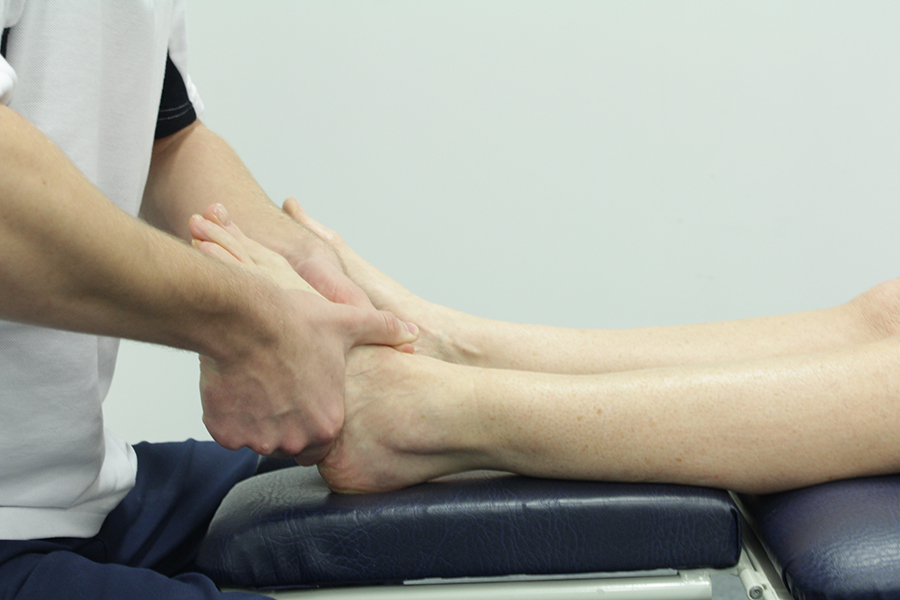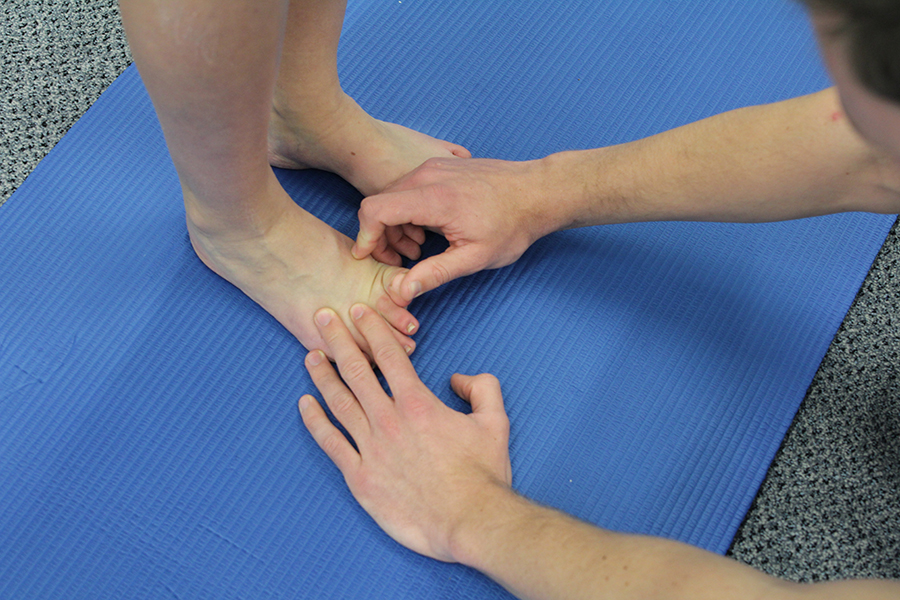Retrocalcaneal bursitis
Retrocalcaneal bursitis is a cause of pain at the back of the heel resulting from inflammation of a bursa, which is a fluid filled sack that prevents friction. The bursa affected in retrocalcaneal bursitis is positioned at the back of the heel and is positioned between the heel bone and the Achilles tendon. The job of the bursa is to provide a smooth gliding surface for the Achilles tendon to move over.
Retrocalcaneal bursitis is a painful condition that affects the back of the heel. Retrocalcaneal bursitis refers to inflammation of a fluid filled sac called a bursa, which sits between the heel bone and the Achilles tendon.
Retrocalcaneal bursitis affects the back of the heel, specifically the condition affects the fluid filled sac called a bursa that sits between the Achilles tendon and the heel bone. The bursa is there to allow the Achilles tendon to move freely over the heel bone, however if it becomes irritated it will swell and become inflamed; this is known as retrocalcaneal bursitis
Retrocalcaneal bursitis occurs when the bursa between the heel bone and the Achilles tendon is irritated; therefore any action that leads to irritation of the bursa at the back of the heel can lead to retrocalcaneal bursitis.

The signs and symptoms or retrocalcaneal bursitis include:
Retrocalcaneal bursitis can be easily diagnosed by a podiatrist based on the signs and symptoms and an examination of the heel.
If you have retrocalcaneal bursitis the following benefits can be achieved following podiatric assessment and treatment:
Podiatry for retrocalcaneal bursitis would involve a thorough history, which would include a medical history as well as an account of the problem itself. The history would then be followed by an examination of the affected area. Upon the diagnosis of retrocalcaneal bursitis one of our podiatrists will then discuss the possible treatments, all of which are designed to reduce any pain and inflammation associated with the condition. The treatment recommended may include:

Retrocalcaneal bursitis refers to a painful swelling at the back of the heel. The swelling is an inflamed bursa, which is a fluid filled sac that sits between the heel bone and the Achilles tendon. The function of the bursa is to provide a smooth gliding surface for the Achilles tendon, thereby reducing friction.
Our podiatrists here at Chiropody.co.uk can help you if you have retrocalcaneal bursitis by providing you with a treatment plan designed specifically for you. All our treatments are mutually agreed, the aim of any treatment is to reduce any pain and inflammation, as well as to improve the function of the foot and the lower limb, allowing you to continue with your activities pain free.
To arrange an appointment with us at Chiropody.co.uk please email office@chiropody.co.uk or call 0330 088 4222.
Retrocalcaneal bursitis is a painful condition that affects the back of the heel. Retrocalcaneal bursitis refers to inflammation of a fluid filled sac called a bursa, which sits between the heel bone and the Achilles tendon.
What is retrocalcaneal bursitis?
Retrocalcaneal bursitis affects the back of the heel, specifically the condition affects the fluid filled sac called a bursa that sits between the Achilles tendon and the heel bone. The bursa is there to allow the Achilles tendon to move freely over the heel bone, however if it becomes irritated it will swell and become inflamed; this is known as retrocalcaneal bursitis
What causes retrocalcaneal bursitis?
Retrocalcaneal bursitis occurs when the bursa between the heel bone and the Achilles tendon is irritated; therefore any action that leads to irritation of the bursa at the back of the heel can lead to retrocalcaneal bursitis.
- Running up hill
- Overuse of ankle (e.g. walking jumping etc.)
- Tight calf
- Irritation from footwear
- Poor foot posture
- Rapid increase in mileage/activity levels

What are the signs and symptoms of retro calcaneal bursitis?
The signs and symptoms or retrocalcaneal bursitis include:
- Pain at the back of the heel which may become worse when standing on tiptoes, upon activity or when the area is touched
- Heat and redness
- Swelling at the back of the heel
How is retro calcaneal bursitis diagnosed?
Retrocalcaneal bursitis can be easily diagnosed by a podiatrist based on the signs and symptoms and an examination of the heel.
Benefits of podiatry for retrocalcaneal bursitis
If you have retrocalcaneal bursitis the following benefits can be achieved following podiatric assessment and treatment:
- Reduction in pain at the back of the heel
- Reduction in inflammation
- Reduced muscle tightness
- Improved gait
- Improved foot and lower limb function
What would podiatry for retrocalcaneal bursitis involve?
Podiatry for retrocalcaneal bursitis would involve a thorough history, which would include a medical history as well as an account of the problem itself. The history would then be followed by an examination of the affected area. Upon the diagnosis of retrocalcaneal bursitis one of our podiatrists will then discuss the possible treatments, all of which are designed to reduce any pain and inflammation associated with the condition. The treatment recommended may include:
- R.I.C.E: rest, ice, compression and elevation
- Anti-inflammatory advice
- Orthotics
- Stretching Programmes
- Wedges
- Ultrasound
- PSWD
- Laser
- Manual therapy
- Acupuncture
- Biomechanical assessments
- Footwear review
- Training regime modification

Summary
Retrocalcaneal bursitis refers to a painful swelling at the back of the heel. The swelling is an inflamed bursa, which is a fluid filled sac that sits between the heel bone and the Achilles tendon. The function of the bursa is to provide a smooth gliding surface for the Achilles tendon, thereby reducing friction.
Our podiatrists here at Chiropody.co.uk can help you if you have retrocalcaneal bursitis by providing you with a treatment plan designed specifically for you. All our treatments are mutually agreed, the aim of any treatment is to reduce any pain and inflammation, as well as to improve the function of the foot and the lower limb, allowing you to continue with your activities pain free.
To arrange an appointment with us at Chiropody.co.uk please email office@chiropody.co.uk or call 0330 088 4222.
Save 5% by booking an appointment online.

Find your nearest clinic
We have clinics located throughout the North West. We also provide a home visit service.
Find out more »

No waiting lists!
Tired of waiting for treatment? Be seen by a podiatrist today!
Find out more »

Not sure how we can help?
Speak to a podiatrist to find out how we can help. Call us on 0330 088 4222.
Find out more »
We work with:

Individuals

Organisations

Health professionals
Get in Touch!
0330 088 4222
If you would like to speak to one of our specialists then please complete this form.
We are open 7 days a week








